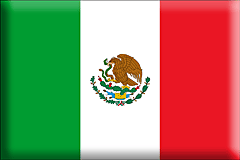VEHICLES Personal Motor Vehicles in MexicoFor the purpose of crossing the border and operating in Mexico, a personal motor vehicle is defined as any passenger car, pickup truck, or motorcycle with an engine bigger than 250cc. Depending on where you are or are going, these may need a TIP (Temporary Import Permit) ATV’s and motorcycles of 250cc or less are considered as a recreational device and are covered by the RV or towing vehicle TIP {link to TIP}
Drivers License You will need a valid driver's license; those issued by most other countries are recognized by the Mexican Government. This is all you need to drive in Mexico (besides insurance. See my Sticky on
FAQ Insurance for Mexico). Mexican driver's licenses are not issued to people with a FM-T. A FM-3 or better is needed to obtain a Mexican driver's license.
Who can drive your vehicle?Mexican Law pertaining to who can and who cannot drive your vehicle is completely different then in the U.S. or Canada. In Mexico, for anyone else to drive your vehicle, you have to be in it! Mexican Law paraphrased says the registered owner of the vehicle must be in the vehicle at the time of an accident. One of the exceptions to the law is that a spouse who is on the registration can give the spouse whose name is not on the registration a letter of authorization allowing them to drive the vehicle without the registered spouse being in the car. This letter of authorization can also be given to immediate family members (son, daughter, mother, father, brother and sister). You cannot give this letter to an unrelated person. Should you let an unrelated person drive the vehicle, even if you gave him a letter of authorization, and he had an accident the vehicle would most probably be confiscated and if there were any injures he would be put in jail. They are very dogmatic as to who can and who cannot drive a vehicle.
RegistrationYou will also need a valid registration for all your vehicles. The registration must be in your name. If there are lien holders on the vehicle(s), you will need a letter from the lien holder (Pagare Letter) authorizing you to take the vehicle across the border. This includes trailers, boats, boat trailers, and ATV's & motorcycles above 250 cc. Each driver is allowed only one vehicle above 250 cc (excluding the new RV sticker; see Temporary Import permits for RV's, below).
Jump to TIP.
To expand on this a little, if you have a company owned vehicle, even if it's your own company or LLC, you will need the letter! So, for you RVers with your rigs registered in a LLC, Print out a letter, on company letterhead, stating that the company will allow you to take the rig into Mexico for the period of xx/xx/xxxx to xx/xx/xxxx. Sign it as President (or whatever position you hold in the LLC) and you're set. Some go so far as to get it notorized, but I don't think that's necessary; I've never had mine notorized and never had a problem.
If you're registered in a state that doesn't show lien holders on the registration, you don't need one as far as the border officials are concerned. But your lien holder may have a different rule on that. To be on the safe side, check with them.
InsuranceYou will also need insurance; see the Sticky
FAQ Insurance for Mexico. I've never been able to find a Mexican Law that says that you have to have it, and I've never been asked for it when doing the border paperwork, but the signs on the walls at the Banjercito say you need it. And without it, an accident will probably put you in jail regardless of who was at fault.
CopiesYou will need at least 3 copies each of the following.
- Drivers License
- Registration
- Insurance
You will be required to show for inspection the originals, and leave a copy of these at various places. Normally it is one copy for the Migración office and one copy for the Banjercito (bank). In some cases you might have to go to two different windows at the Banjercito, one for the FM-T's and one for the vehicle stickers, and both will ask for copies; hence 3 copies.
You will also need copies of the paperwork you are issued. There are copy centers co-located with the Banjercito's, where, for a nominal fee, you can get these documents copied (and any that you didn't bring copies of).
Finally, to get vehicle permits (see below), you will need a valid internationally recognized credit card. If you don't have one, you will have to post bond on all the vehicles. This is expensive and complicated, and is based on the value of the vehicle. If you're going this route, check with the local Consulate ahead of time.
Of course there are exceptions to all this "copy" stuff. Below is an example of how easy it can be.
Crossing at Reynosa
We went to Reynosa today to get our vehicle permits and our visas and what a surprise, the easiest time we ever had at any crossing. They have a nice newer building that you start at one end and go station(1) thru station(4) and exit the other end. The whole process took about 30 minutes to get our visas, and two vehicle permits, one RV and one toad. No copies of anything needed, just present your passport, DL, and registrations and they make a copy of what they need and give it to you then on to the next station, great to see such a streamlined process. Now when we head in Monday, it's across the bridge and head for Monterrey.
Return to Index 
